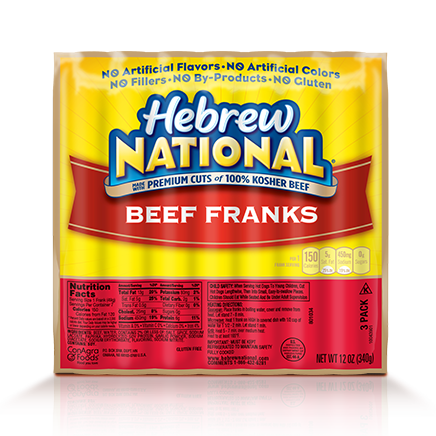Distinguishing Standing and Injury in 75-1.1 Cases

Ellis & Winters
As baseball fans know, any trip to the ballpark requires a good hot dog. And one hot dog soars above the rest: the all-beef kosher hot dog.

A Minnesota judge was probably enjoying fond October baseball memories when he recently wrote a notable decision in a putative class action that involved kosher hot dogs. That decision, Wallace v. ConAgra, addresses the roles of standing and injury in unfair-trade-practices lawsuits. As we’ll see, that’s an issue that plays out under N.C. Gen. Stat. § 75-1.1 as well.
That’s Not Kosher!
The complaint in Wallace attacked the label on Hebrew National hot dogs. ConAgra, the defendant, manufactures Hebrew National products.
The label on Hebrew National hot dogs says that they are “100% kosher.” The label also includes the “Triangle K” symbol. As applied to beef, this symbol says that Triangle K, a rabbinically supervised organization, has verified that the beef was slaughtered, processed, and inspected according to kosher standards. The symbol has special meaning for observant Jews who keep kosher.
According to the Wallace plaintiffs, Hebrew National hot dogs do not actually meet Triangle K’s standards. They sued ConAgra in Minnesota state court. The case was removed to federal court, but after an appeal to the Eighth Circuit, it was dismissed from federal court and refiled in state court.
Distinguishing Rule 12(b)(1) from Rule 12(b)(6)
The Minnesota court focused on the plaintiffs’ lack of injury from ConAgra’s alleged misrepresentation of Triangle K compliance. The plaintiffs had alleged that it “is impossible for any reasonable consumer to detect” whether a hot dog had been mislabeled as kosher. Some of the hot dogs were truly kosher, and some were not, but a reasonable plaintiff would have no way to tell.
According to the court, this admission meant that the plaintiffs lacked standing. The plaintiffs, in essence, were saying: “We think we paid too much for hot dogs that aren’t completely kosher, but we can’t identify any particular non-kosher hot dogs that we’ve bought. And by the way, we’re never buying Hebrew National hot dogs again.”
Those points led the court to conclude that the plaintiffs lacked standing under the unfair-trade-practices laws of several states.
Dual Standing Concepts
Wallace raises an important question for North Carolina courts and lawyers: When a lawsuit in North Carolina state court alleges a violation of section 75-1.1, is “standing” an element of the state court’s jurisdiction? Does “standing” ask only whether the claimant has alleged that he was injured by a 75-1.1 violation? Are both true?
These questions are not just academic:
- If standing is solely a jurisdictional concept, then a party who moves to dismiss on that basis can attach papers without converting her motion to dismiss to a motion for summary judgment.
- If, on the other hand, standing just asks whether the plaintiff has alleged an injury that satisfies section 75-16, a standing-based motion is a Rule 12(b)(6) motion—a motion with a much narrower scope of review.
Answers to some of these questions come from a reliable source: a recent decision of the North Carolina Business Court.
In Sykes v. Health Network Solutions, Chief Judge Gale explained that standing arguments can arise under both Rule 12(b)(1) and Rule 12(b)(6). Standing under Rule 12(b)(1) is an issue of subject-matter jurisdiction: it asks whether the plaintiff has suffered an actual, concrete injury. Standing under Rule 12(b)(6), in contrast, is a question about pleadings: it asks whether the alleged facts state the elements required for the relief sought.
This explanation is important for plaintiffs and defendants in 75-1.1 cases.
- If you represent a defendant, you have two different avenues to seek the dismissal of the claims of a plaintiff who does not seem to have suffered an injury. You can use Rule 12(b)(1) to present materials outside the pleadings, if necessary, to make your case.
- If you represent a plaintiff, when you file your complaint, you should have evidence that you can use to show and trace your client’s injury. You might soon need this evidence to oppose a Rule 12(b)(1) motion.
On this issue more generally, the Fourth Circuit’s 2009 decision in Kerns v. United States provides a helpful explanation of the circumstances in which a federal court will (a) decide subject-matter jurisdiction based on the complaint’s allegations, (b) conduct an evidentiary hearing to resolve disputed jurisdictional facts, or (c) allow appropriate discovery on disputed jurisdictional facts before resolving that dispute.
Now, back to kosher hot dogs. The Minnesota court’s order seems to embrace both the Rule 12(b)(1) meaning and the 12(b)(6) meaning of standing. The court decided that the plaintiffs had no particularized injury, but it also decided that the plaintiffs could not satisfy the injury element of their substantive claims.
Under section 75-1.1 and the law of several other states, then, “standing” is a bit of a double-header. Food for thought. Pass the mustard.
Author: Stephen Feldman

